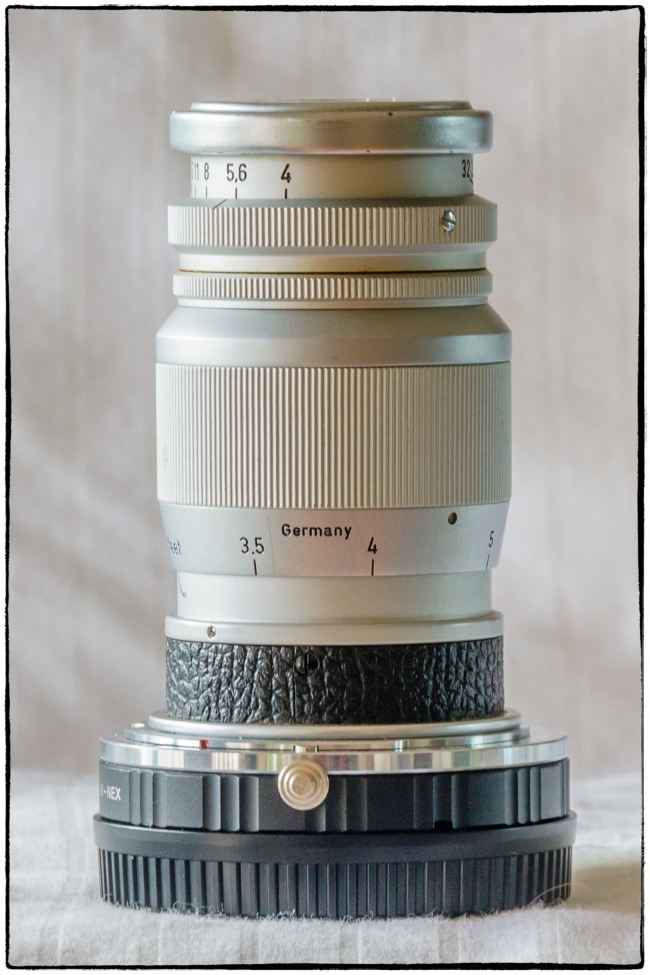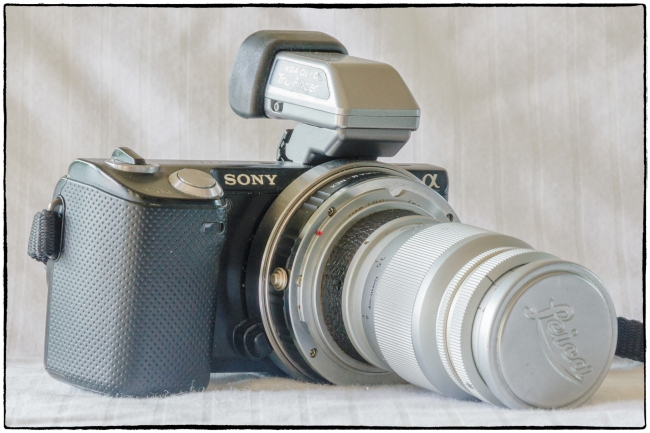When I started camera collecting I was initially focused on rangefinder cameras. I hadn’t really collected anything before, and I wasn’t sure if my interest would last. I didn’t want to spend much money (just in case) and I bought a couple of Former Soviet Union rangefinder cameras: A FED 2 and a Zorki 4. Of course these cameras use lenses (in this case a Jupiter 8 and an Industar 61) with a Leica Thread Mount (LTM).
As time went on I decided that I liked using these cameras and decided it was time to get a real Leica – A Leica IIIf. Although the FSU lenses I had worked well and produced results I liked, I thought I should have at least one actual Leitz lens. I didn’t want to pay an arm and a leg so I opted for this 90mm f4 Elmar. I was at first suspicious of the low cost (less than $100), but I was buying it from a very reputable dealer so I decided to take a chance.
A discussion thread on photo.net entitled Leica 90mm f4 Mystery suggests some reasons why these lenses are inexpensive:
I believe you are describing the 90/4 Elmar in Leica thread mount, (LTM) is that right? The Leitz code designation is ELANG. As long as there is no fungus, fog, or haze, there’s nothing wrong with it. Until 1963 these were of the four-element triplet design. Then they changed to three elements. Like most triplets (and to some extent like practically all lenses), they are sharp in the center, and perhaps less so at the edges and corners especially wide open–like the 50mm Elmar. But there are always photographers who prefer the imaging properties of one or another lens! It’s a decent lens, and a compact one. As the lens began production in 1931, early examples are probably not coated. The thin version started in 1932. They were black until the late ’40’s, when they switched to chrome. They pretty one with the band of Vulcanite was introduced in 1950. I don’t think there’s anything wrong with them. Maybe they have not been “discovered” yet!
…
Supply exceeds demand. Also, it’s not the sharpest of lenses, but it is a pleasant lens. The VIOOH (Imarect) finder commonly used with it provides a quite small image at the 90mm setting. You have to be careful about parallax with this lens.
I have the “…pretty one with the band of vulcanite” mentioned above, which according to How to determine the production year of a Leica lens based on the serial number was made in 1952 (coincidentally the year I was born).
I really is a lovely lens. My copy is in great shape cosmetically and it feels really well made (especially compared to my FSU lenses, which although they work well feel very “rough and ready”). It’s true that at f4 it’s a bit slow, but for the kind of pictures I take this doesn’t bother me much. Nor does the lack of sharpness. I’ve never been a believer that good photographs necessarily have to be ultra sharp.
I still haven’t used it on the Leica, but I did decide to use it on my NEX 5N with an adapter – or actually with two adapters. My LTM-Sony E mount adapter doesn’t seem to work right so in this case I used an LTM-Leica M adapter and a Leica M-Sony E mount adapter), which worked perfectly. Note that in the picture above you see the lens, the adapters and a body cap. The actual lens starts at the band of vulcanite. It’s quite small and rather light. In the picture below you can see the lens on the NEX. To take this picture I removed a Minolta MD 50mm f1.4, which was not much shorter and noticeably heavier. On the NEX the lens is of course a 35mm equivalent 135mm lens.
For some pictures taken with this lens see:
Eighteen Arhats: Right Side
Eighteen Arhats: Left Side
Eighteen Arhats: My personal favorite – Mahakappina Thera (not such a great example because I missed the focus).
Leitz 90mm f4 Elmar on Sony NEX-5N


